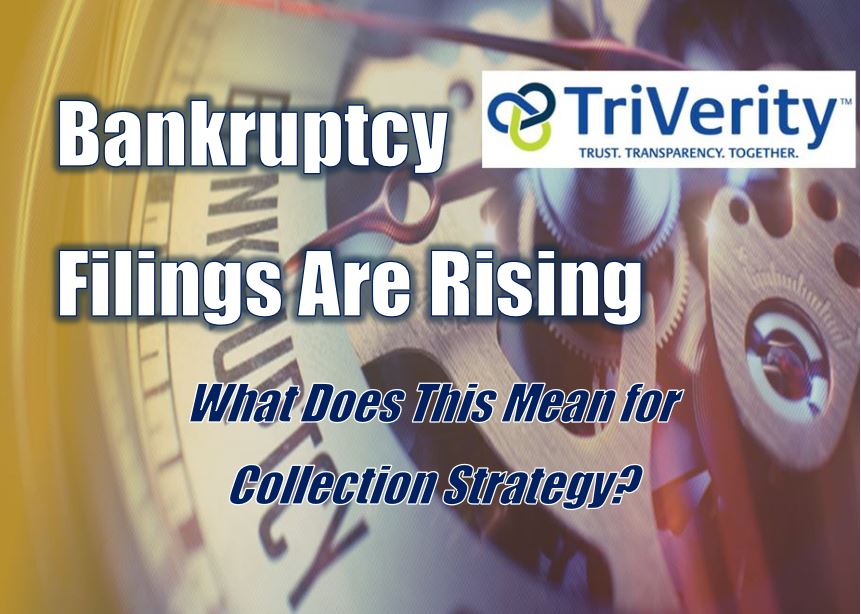–
Bankruptcy filings have risen steadily over the past year. The latest AIS Bankruptcy Insights Report shows an almost 9% increase year-over-year. This surge signals growing financial distress among consumers and presents new challenges and opportunities for collection strategies.
In April 2025 alone, nearly 50,000 bankruptcies were filed, marking an 8.8% increase compared to the same period last year. Chapter 7 filings, which typically result in liquidation, climbed by nearly 13%, highlighting rising consumer financial stress. Although overall filings remain below pre-COVID levels, the upward trend demands attention from lenders and collections teams. Similar trends have been noted in industry reports, including Auto Remarketing’s recent analysis of consumer financial worries and bankruptcy filings, as well as a follow-up article highlighting the mounting financial strain pushing filings higher.
Experts cite inflation, higher borrowing costs, economic uncertainty and even the ripple effects of new tariffs as key drivers behind the rise in personal bankruptcies. As tariffs raise prices on everyday goods and vehicles, already stretched consumers face increased financial pressure. With more borrowers nearing a breaking point, bankruptcy activity is expected to continue climbing.
–
Risks in a Shifting Landscape
Leaving rising bankruptcy rates unaddressed can pose harmful consequences for financial institutions. A recent Law Biz Talk article notes that increasing bankruptcy filings often lead to:
- Lower recovery rates, as more accounts become legally uncollectible.
- Increased compliance risks if financial institutions continue collection efforts after bankruptcy filings, which violates the automatic stay.
- Higher operational strain, as internal teams scramble to keep up with the volume of bankruptcies and changes in legal status.
The automatic stay, triggered immediately upon bankruptcy filings, prohibits further collection activity. Failure to identify a bankruptcy in time puts collections teams at risk of violating this protection. This can lead to financial penalties, legal exposure and reputational harm. Financial institutions already stretched thin may find it harder to keep up with timely bankruptcy identification, increasing the chance of errors.
–
Turning Risk into Opportunity
While the skyrocketing number of bankruptcies brings undeniable risks and highlights the need for timely awareness and responsive action, it also presents an opportunity for financial institutions. By identifying these changes early with proactive monitoring, financial institutions can ensure agile workflows and robust risk management strategies are implemented to protect portfolios and maintain compliance.
To make the most of this opportunity, financial institutions should focus on three key areas:
- Identify bankruptcies quickly to adjust your approach before violations occur.
- Engage borrowers early to show empathy and offer support during financial hardship.
- Adapt workflows to ensure staff, systems and legal partners stay aligned and responsive.
Timely action and refined processes can reduce risk, strengthen borrower relationships and help financial institutions stay ahead in a shifting economic climate.
–
A Smarter Approach for Staying Ahead
To stay ahead of rising bankruptcy filings, financial institutions should adopt a forward-thinking approach that includes the following best practices:
- Implement real-time bankruptcy monitoring tools to alert collections teams at the earliest stage.
- Prioritize accounts based on bankruptcy risk to focus resources effectively.
- Refine segmentation strategies to tailor collection efforts and reduce risk.
- Coordinate closely with legal counsel to ensure compliance.
- Adjust outreach timing and communication strategies to improve borrower engagement.
These best practices empower your financial institution to anticipate and respond effectively to the shifting economic environment. As more consumers face financial pressure and bankruptcy filings continue to rise, financial institutions that rely only on reacting after issues arise may find themselves a step behind.
By aligning collections strategies with timely data and deliberate decision-making, lenders can preserve more value, reduce legal exposure and offer a more respectful experience to borrowers navigating financial hardship. But your financial institution doesn’t have to do it alone. Consider working with a partner, like TriVerity, to leverage industry-leading tools and expertise in order to respond effectively to the increasing number of bankruptcies in today’s uncertain economic environment. As bankruptcy filings continue to rise, it is imperative for collection strategies to evolve accordingly.
–
By: Shannon Betz, Manager of Delinquency Management Extended Services, TriVerity
–
About the Author
Shannon Betz is the Manager of Delinquency Management Extended Services for TriVerity and has her degree in Paralegal Studies with an emphasis on bankruptcies. She brings over 20 years of experience in the collection world and extensive knowledge of bankruptcies. Shannon’s primary responsibility is overseeing bankruptcies and repossessions TriVerity coordinates and handles for our clients.
About TriVerity
TriVerity, a Velera company, is a full-service first- and third-party collection agency that manages early-stage delinquency, non-performing loans and charged-off loans with a comprehensive menu of collection services. Since 1990, TriVerity has worked with over 2,800 financial institutions nationwide and is a leading industry expert for financial institution collections of all loan types. TriVerity’s broad spectrum of collection resources and training programs help financial institutions manage and mitigate loan delinquency rates. For more information, go to www.TriVerity.com.

Bankruptcy Filings Are Rising — What Does This Mean for Collection Strategy? – Bankruptcy Filings Are Rising — What Does This Mean for Collection Strategy? – Bankruptcy Filings Are Rising — What Does This Mean for Collection Strategy? – Bankruptcy Filings Are Rising — What Does This Mean for Collection Strategy?
Bankruptcy Filings Are Rising — What Does This Mean for Collection Strategy? – Credit Union Collections – Credit Union Collectors – Lending – Bankruptcy – Delinquency – Triverity – The Loan Service Center












Facebook Comments